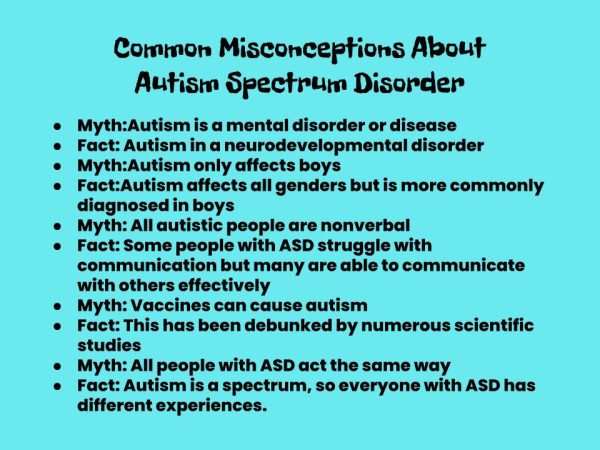Autism Spectrum Disorder (ASD) is a neurological disorder that occurs during development of the brain. ASD affects a person’s communication, behavior, and social abilities.
In April, the public celebrates Autism Awareness Month in an attempt to educate others on Autism and eliminate harmful stereotypes and assumptions that are often placed on people who have ASD. April is an opportunity for autistic people to share their stories and for neurotypical people to grow into being more inclusive.
There is a lot of confusion on the actual struggles a person with autism goes through and it varies from person to person. An autistic person will typically struggle with holding eye contact, understanding facial expressions and body language, tolerating or detecting different sounds, textures, smells and lights. Another common characteristic of people with autism is hyper fixation. Hyper fixation is a state of intense and prolonged focus on a specific activity, interest, or subject. Autistic people often hyper fixate as a coping mechanism for different sensory and social overloads and as a way for comfort. It is important to note that not every autistic person identifies with these characteristics.
Sophomore Phoenix Gontkovsky has ASD and states “ I am extremely detail-oriented and am sensitive to bright lights and sounds.”
While there is no “cure” for ASD there are many ways an autistic person is given to manage their symptoms. There are many different behavioral therapies such as Applied Behavior Analysis, Discrete Trial Training Pivotal Response Treatments, Occupational Therapy, and Speech-Language Therapy. These tools help autistic people with everything from social skills to communication devices. Antipsychotics, Stimulants, and Antidepressants can also be prescribed to help deal with symptoms like short attention span, aggression, anxiety, or depression.
Gontkovsky says they are “lucky enough to have accommodations and coping skills” for when they feel overwhelmed.

















